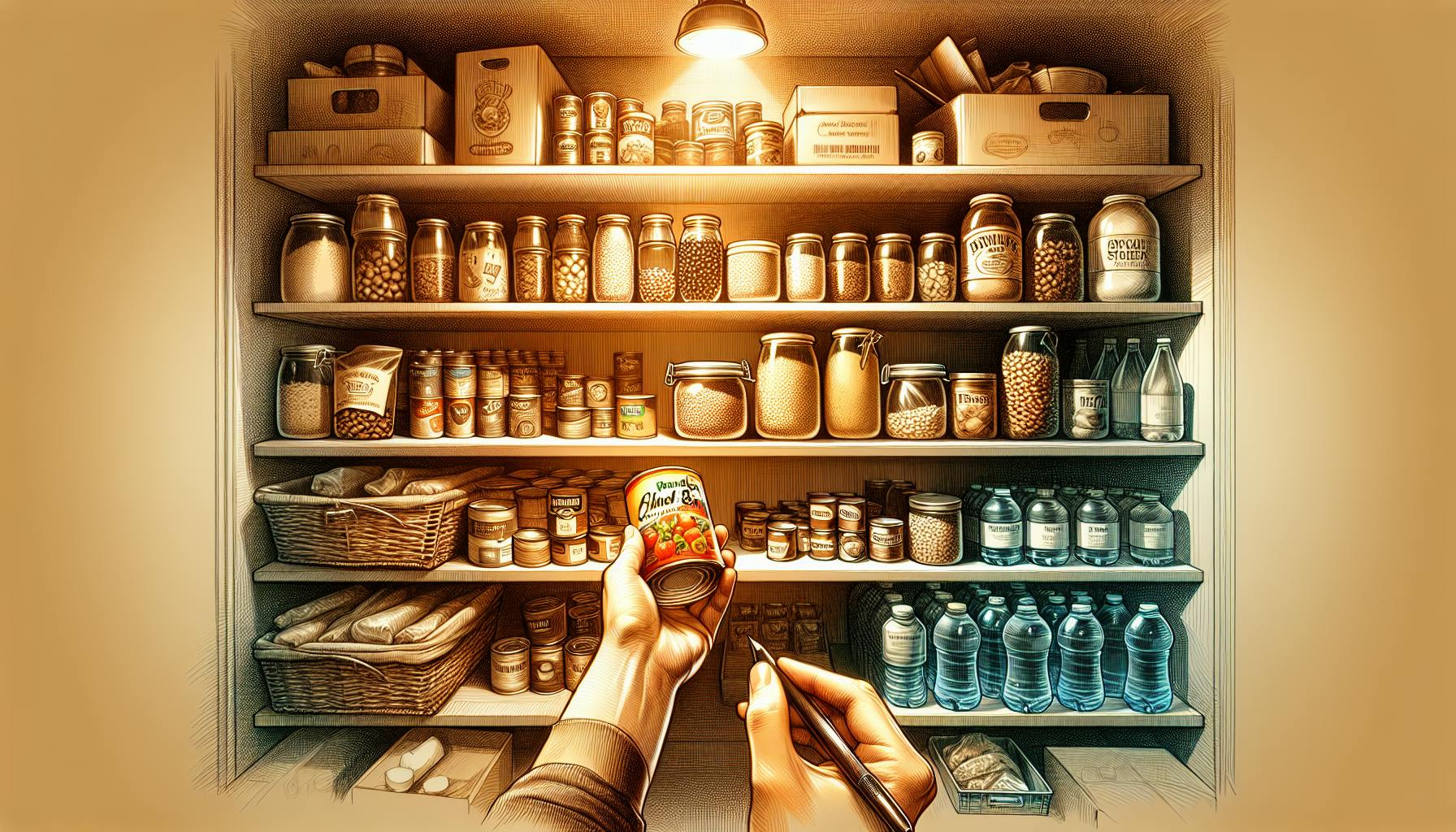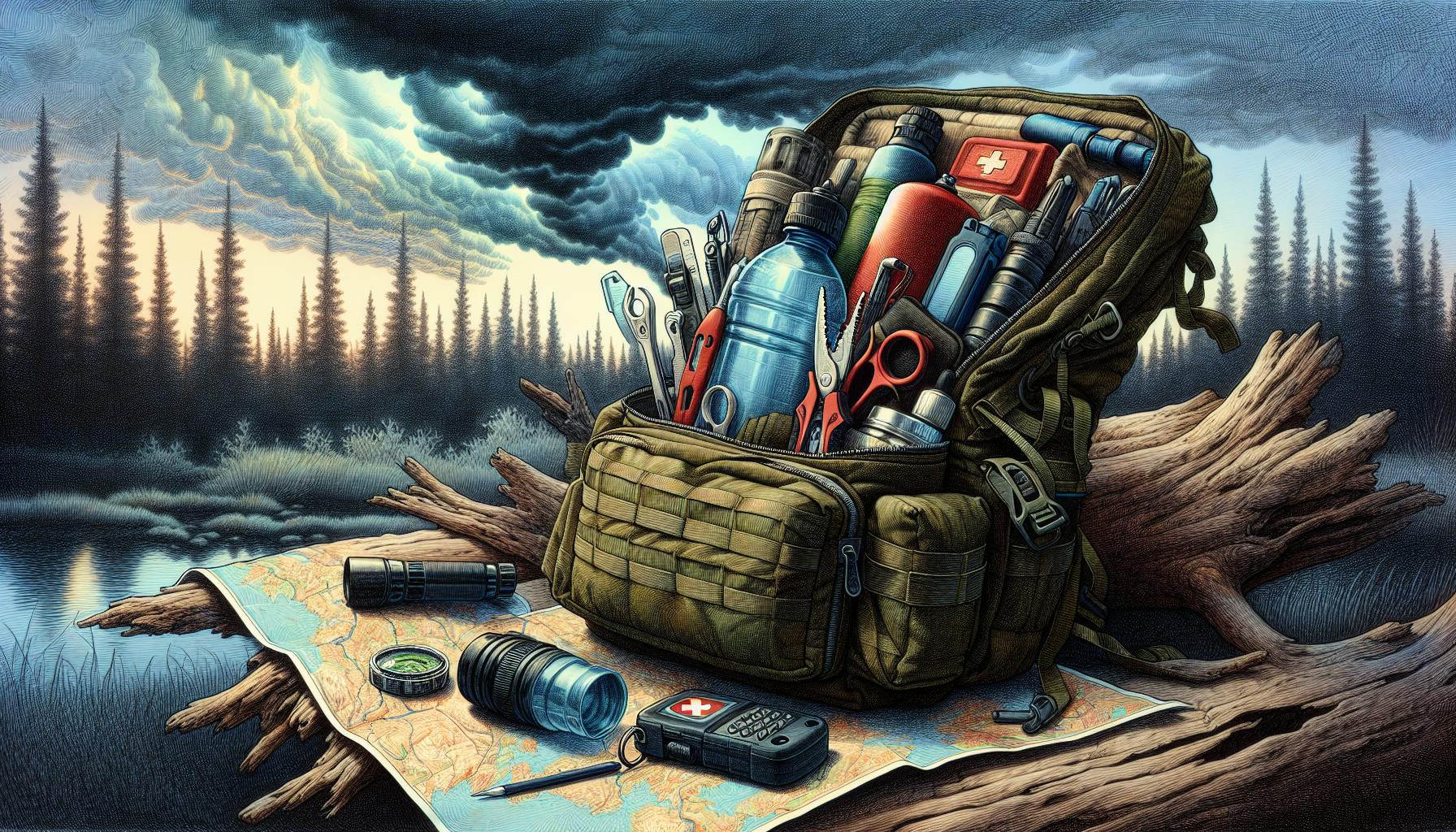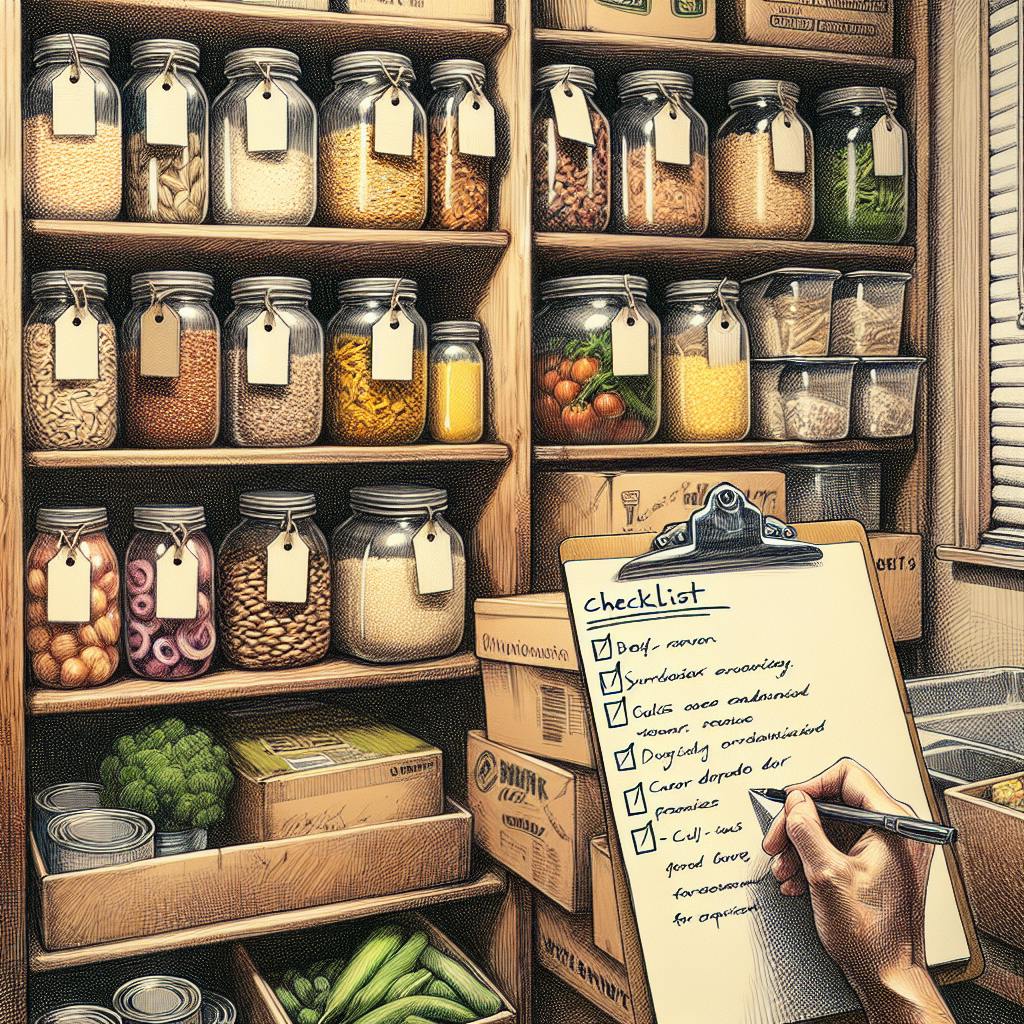When crisis strikes, having reliable access to nutritious food is essential for health and survival.
This guide reviews the top-rated emergency food kits to identify the optimal solutions for nutritional balance, long shelf life, and easy preparation when you need it most.
We'll explore key selection criteria, compare leading emergency food brands, and summarize must-have gear to equip your family for emergency preparedness.
Introduction to Emergency Food Supply Essentials
An emergency food supply is crucial to have on hand for when disaster strikes. This introductory section will cover the basics of emergency food supplies, including why they are important to have and what criteria makes up the best options.
Understanding the Importance of Emergency Food Supplies
Emergency food supplies serve an essential purpose - to sustain you and your family when a crisis occurs. Being prepared with adequate food and water is critical in situations like:
- Natural disasters - hurricanes, floods, blizzards can disrupt normal access to food.
- Power grid failures - loss of refrigeration and access to grocery stores.
- Economic collapse - supply chain breakdowns, inflation.
- Pandemics - quarantines, limited shopping abilities.
Having at least a 72-hour stockpile of non-perishable food on hand provides a necessary buffer until utilities and infrastructure can be restored. More extensive supplies that can last weeks or months may be prudent as well.
The key is being self-reliant, avoiding desperate scrambles for scarce resources when an emergency strikes. A reliable food supply brings peace of mind.
Criteria for Best Rated Emergency Food Supply
When evaluating emergency food kits, key criteria include:
- Nutritional value - Meals should contain a balanced mix of protein, carbs, vitamins.
- High calorie density - Critical in stressful situations where appetite is diminished.
- Long shelf life - 5-25 years to outlast any crisis.
- Taste - Important for consistent eating over long periods.
- Easy preparation - Should not require cooking appliances, electricity, excess water.
The highest rated emergency food supplies meet all the above criteria. They deliver complete, nutritious meals that will keep you nourished in the toughest times.
What is the best food supply for emergency?
When building an emergency food supply, it's important to focus on shelf-stable foods that provide balanced nutrition to support health. Some top food recommendations include:
- MREs (Meals Ready-to-Eat): Pre-packaged, self-contained meals designed for emergencies. They have a long shelf life of 5+ years. MREs give you about 1200 calories per meal and have entrees like spaghetti, chicken breast, or beef ravioli.
- Canned goods: Canned fruits, vegetables, beans, meats, fish, juices, broths and soups can last 2-5 years unopened. Look for low or reduced sodium options.
- Shelf-stable milk/juices: These tetra-packed shelf-stable cartons have a 1-2 year shelf life and give you essential nutrients.
- Crackers and melba toast: These crunchy, lightweight snacks last 9-12 months. Check labels and avoid cheese/meat combinations that require refrigeration.
- Peanut butter and jelly: These high-calorie spreads can make almost any cracker or bread into a meal. Unopened, they can last up to a year.
The best emergency food has a long shelf life, balances nutrition, and has easy preparation with minimal or no cooking/water needed. Prioritize portable, calorie-dense foods as well. Build your supply to support your household size and expected length of emergency.
What is the number one survival food?
Dry beans and legumes are considered the number one survival food as they form a nutritious foundation for a survival diet. Beans contain protein, complex carbohydrates, and fiber, making them a literal powerhouse of nutrients.
When paired with rice or other grains, beans can provide the body with all essential amino acids and form a complete protein. Some key benefits of beans as a survival food include:
- High in Protein: Beans contain significant amounts of protein needed to maintain strength and health, especially when meat is scarce. Different types range from 7-15 grams of protein per cooked cup.
- Nutrient Dense: In addition to protein, beans deliver complex carbs, fiber, iron, magnesium, zinc and B vitamins. They are far more nutrient-dense than many processed foods.
- Long Shelf Life: When stored properly in a cool, dark place, dried beans can last for years, making them an ideal survival food. Canned beans also have a shelf life of at least 12 months when unopened.
- Versatile: Beans can be used in soups, stews, salads, dips and more, adding variety to the diet. They take on the flavors of other ingredients nicely.
- Affordable: Dried and canned beans are one of the most economical sources of good nutrition available. Stocking up is budget-friendly.
When planning food storage for emergency preparedness, beans should be at the top of the list. They check all the boxes in terms of nutritional content, shelf stability and versatility. Whether stocking dry or canned beans, they are arguably the #1 survival superfood.
What is the best food for long term storage emergency?
When building an emergency food supply, it's important to select foods that have a long shelf life and provide balanced nutrition. Some top options include:
- Canned meats like tuna, chicken, salmon, and spam can last 2-5 years when properly stored. Canned meats are packed with protein.
- Rice has an almost indefinite shelf life and is rich in carbohydrates. White rice stores better than brown.
- Dried beans and legumes like black beans, kidney beans, lentils, and chickpeas are packed with plant-based protein and fiber. They can last 8-10 years when stored properly.
- Ready-to-eat cereals or pasta have a 1-2 year shelf life and add variety. Look for whole grain options.
- Dried fruits and nuts provide key micronutrients and healthy fats. Most last 1-2 years stored.
When building your emergency food supply, it's important to have a balance of shelf-stable proteins, fruits, vegetables, grains, and healthy fats. Rotate and replace items as they near expiration. Store foods in a cool, dark place and use airtight containers to maximize freshness. With some planning, you can build a nutritious, long-lasting food supply.
sbb-itb-b932644
Is it worth buying emergency food?
Emergency food kits are absolutely worth investing in as part of your disaster preparedness plans. Here are some key reasons why:
- Long shelf life: Emergency food is designed to last for years or even decades when stored properly, ensuring it will be there when you need it most. Many kits have a shelf life of 25-30 years.
- Nutritionally complete: Reputable emergency food brands contain balanced meals with adequate calories, macronutrients, vitamins, and minerals to support good health. This includes vegetarian and gluten-free options.
- Convenient: Emergency food requires minimal preparation with just the addition of water in most cases. It is portable and requires no refrigeration. Kits come in easy-to-store containers.
- Peace of mind: Having an emergency food supply gives you confidence that your family will have their basic nutritional needs met if a crisis interrupts normal food supplies for an extended period.
Investing in a high-quality emergency food kit from a leading brand provides insurance against the unexpected. With minimal upkeep, these kits can sustain you and your loved ones in times of need.
Best Rated Emergency Food Supply for Survival
Delve into the top-rated emergency food supply kits that are essential for survival, with a focus on the best survival food kits of 2023.
Augason Farms Emergency Supply Food Kit
With a variety of tasty flavors and over 20,000 calories per bucket, this highly-rated emergency food supply kit from Augason Farms provides excellent value and balanced nutrition. The 30-year shelf life ensures you can store these meals for decades.
Some pros of the Augason Farms Emergency Supply Food Kit:
- 20,000+ calories per bucket
- 30-year shelf life
- Gluten-free options available
- Affordable price point
- Tasty flavors like cheesy broccoli and chicken noodle soup
One downside is that meals require water to prepare, so ensure you have a separate water supply packed as well. But with hearty servings and calories to fuel your survival, Augason Farms is a top choice.
Mountain House Essential Bucket
Known for great-tasting meals and an industry-leading 30-year shelf life, Mountain House is a premium emergency food supply trusted by survivalists.
Benefits of the Mountain House Essential Bucket include:
- Taste closer to fresh cooked meals
- 30-year guarantee ensures longevity
- No water required for preparation
- Packed with protein and carbs for energy
- Trusted brand with 40+ years in business
On the downside, it is one of the more expensive options per serving. But you get what you pay for with restaurant-quality flavor.
ReadyWise Emergency Food Supply
This convenient grab-and-go option from Wise offers balanced nutrition in individual pouched meals with a 25-year shelf life.
What we like about the ReadyWise Emergency Food Supply:
- Individually packaged meals for easy grabbing
- 25-year shelf life
- Gluten-free and vegetarian options
- Affordable for budget preppers
- Packets easy to transport if bugging out
One negative is that the pouches can take up more storage space. But with a great value proposition, ReadyWise makes for an easy emergency food addition.
Survive2Thrive Vegetarian Preparedness Pail
A vegetarian-friendly kit that doesn't sacrifice nutritional content or shelf life, catering to specific dietary needs.
Benefits of the Survive2Thrive Vegetarian Pail:
- 100% vegetarian ingredients
- 25-year shelf life
- High calories for energy needs
- Affordable price point
- Organic, non-GMO ingredients
The main drawback is it lacks variety and gets repetitive. But Survive2Thrive still hits the marks for an excellent meat-free emergency food supply.
Good To-Go Emergency Food Kit
A newer entrant praised for its best tasting emergency food supply, offering a variety of gourmet options.
Why the Good To-Go Emergency Food Kit stands out:
- Gourmet flavors like pad thai and herb mushroom risotto
- 25-year shelf life
- No artificial ingredients
- Pre-cooked meals just require hot water
- Positive taste feedback from preppers
The main negative is the higher cost. But for great flavor with emergency preparedness, Good To-Go leads the pack.
When building your emergency food supply, focus on nutritional balance, caloric density, shelf life, dietary needs, and ease of preparation. Testing different brands can help find your favorites for keeping hunger at bay when SHTF.
Essential Components for a Family Emergency Food Supply
This section provides a comprehensive guide on assembling an emergency food supply for a family of 4, ensuring all members' nutritional needs are met.
Nutritionally Balanced Meal Planning
When preparing an emergency food supply, it's important to have nutritionally balanced meals that will keep your family healthy. Here are some tips:
- Include lean proteins like beef jerky, canned tuna/chicken, beans, and powdered eggs. These provide energy and help maintain muscle.
- Incorporate complex carbs such as rice, oats, pasta, and potatoes. Opt for whole grain versions when possible. Carbs are an essential energy source.
- Don't forget healthy fats from nuts, seeds, olive oil, salmon, and avocados. These support heart health and vitamin absorption.
- Fiber from lentils, beans, vegetables, fruits, and whole grains keeps digestion regular.
- For micronutrients, stock multivitamins plus fortified foods like cereal, nut butter, and powdered milk.
Creating balanced meals ensures your family gets adequate nutrition to stay healthy through an emergency.
Long-Term Storage Solutions
When preparing a multi-year emergency food supply, you need storage solutions that maximize shelf life:
- Opt for freeze-dried, dehydrated, smoked, salted, or pickled items which last 5-10 years. Canned goods last 2-5 years.
- Store in a cool, dark place like a basement or cellar. Light and heat degrade food over time.
- Use oxygen absorber packets to remove oxygen, preventing oxidation and spoilage.
- Ensure airtight, watertight containers like food grade plastic buckets with gasket seals. This prevents pests, light, air, and moisture from ruining food.
With proper storage methods, your food supply can nourish your family for years to come.
Water Purification and Storage
Since water is essential for survival, stock water or purification methods:
- Store water in food grade barrels with water preserver concentrate to prevent bacterial growth.
- Water filtration systems like Lifestraws, Sawyers, and Berkeys remove bacteria and viruses from found water sources.
- Water purification tablets like Potable Aqua eliminate harmful organisms when dissolved in water.
- Dehydrated water packs from Wise Foods and Mountain House add water on demand.
Having multiple water storage and purification solutions provides flexibility in an emergency.
Cooking and Meal Preparation Essentials
The ability to prepare meals is vital for getting nutrition from your food supply. Have these basics:
- Manual can openers, pocket knives, mess kits, pots/pans enable meal prep without power.
- Camping stoves like propane or Esbit stoves boil water and cook. Fuel types include propane, isobutane, wood pellets, or solid fuel tablets.
- Biodegradable plates, bowls, cups, and cutlery minimize waste without running water.
- Ziplock bags, aluminum foil, plastic wrap, and resealable containers allow food storage after opening without refrigeration.
With the essential tools, you can safely cook and serve meals from your emergency food supply when needed.
Special Considerations for Emergency Food Supplies
When building an emergency food supply, it's important to consider your household's unique needs and priorities. This section outlines key factors to weigh when selecting products.
Adapting to Dietary Restrictions and Preferences
Those with food allergies, diabetes, or special diets like vegetarian/vegan require specialized emergency food products to avoid nutrient deficiencies in a crisis. Seek out allergen-free, low-glycemic, or meatless options from reputable brands that meet your dietary needs.
Taste sample products first whenever possible, or read reviews from those with similar diets. Don't compromise on quality or nutrition. With some research, you can find tasty emergency foods for nearly any diet.
Ensuring Palatable Options for Prolonged Use
In an extended emergency, the most nutritious supplies won't help if they are unpalatable. When taste testing products, consider if they are appetizing enough for you to eat daily.
Include some comfort foods along with staples to boost morale, as long as they store well. Rotate and replace items before they expire so nothing goes to waste. With a mix of good-tasting essentials, your food supply is more likely to be a source of comfort versus dread.
Budgeting for Your Emergency Food Supply
With options ranging from budget-friendly to premium, set an emergency food budget based on your household size and length of intended preparedness. Calculate costs per meal or food group.
Prioritize spending more on staples like grains, legumes and produce with a long shelf life. Splurge on some favorite comfort snacks. Supplement with lower-cost ready-to-eat meals for convenience. Spread purchases out overtime to make prepping more affordable.
Maximizing Shelf Life for Long-Term Preparedness
Consider how frequently you realistically will rotate and replace stock when determining ideal shelf lives for items in your supply. If replenishing annually, shorter shelf lives are fine. For long-term preparedness goals, choose freeze-dried or other extremely shelf-stable options lasting 5-25 years.
No matter what products you choose, be sure to store them properly to maximize freshness and shelf life. Keep supplies in a cool, dark place like a basement or interior closet. Use oxygen absorbers and mylar bags for extra protection.
Practical Tips and Resources for Emergency Preparedness
Summarizing Best Practices for Emergency Food Storage
When building your emergency food supply, focus on shelf-stable foods that provide balanced nutrition. Look for kits with a mix of proteins, fruits and vegetables, grains, and healthy fats. Prioritize options with a long shelf life of 5+ years. Choose foods that require minimal preparation like MREs or freeze-dried meals. Consider specialized diets in your household like vegetarian, diabetic, or allergen-free.
Customize your supply based on your family size and individual needs. Have at least a 3-day supply to start, then build up to 2 weeks or more over time. Store foods in a cool, dark place and routinely cycle out items before they expire.
Connecting with Emergency Preparedness Communities
For more guidance on emergency preparedness, connect with communities like:
- FEMA's Ready Campaign for disaster planning tips
- The Prepared forums to exchange ideas
- VegPrepper for vegetarian-friendly advice
Stay up to date on world events, weather alerts, and safety news that may impact your area. Develop a personal or family preparedness plan tailored to your situation.
Reviewing the Best Emergency Supply Kit Options
Top-rated all-in-one survival food kits like Mountain House Essential Bucket, Good To-Go Emergency Food Kit, and Augason Farms 30-day Emergency Food Supply can sustain a family of 4 during an extended crisis. Choose kits with sufficient calories, balanced nutrition, and your household's preferred tastes and textures.
For power outages, pair your food supply with solar generators like Jackery or Bluetti portable power stations. Build a well-stocked bug out bag with hiking essentials like durable footwear, navigation tools, first aid, and lighting.
Essential Gear Beyond Food: Power Stations and Hiking Gear
In an evacuation scenario, portable power stations like the Jackery Solar Generator 1000 allow you to charge phones, radios, and lights on the go. Maintain situational awareness with a two-way radio from Motorola or Midland. For outdoor navigation, choose a GPS device that works offline like the Garmin eTrex 32x.
Prepare for rough terrain with waterproof Merrell hiking boots and Foxelli trekking poles. Pack high calorie foods like SOS emergency ration bars. A LifeStraw personal water filter removes bacteria and protozoa from freshwater sources. Choose gear designed to withstand extreme weather and prolonged use.


